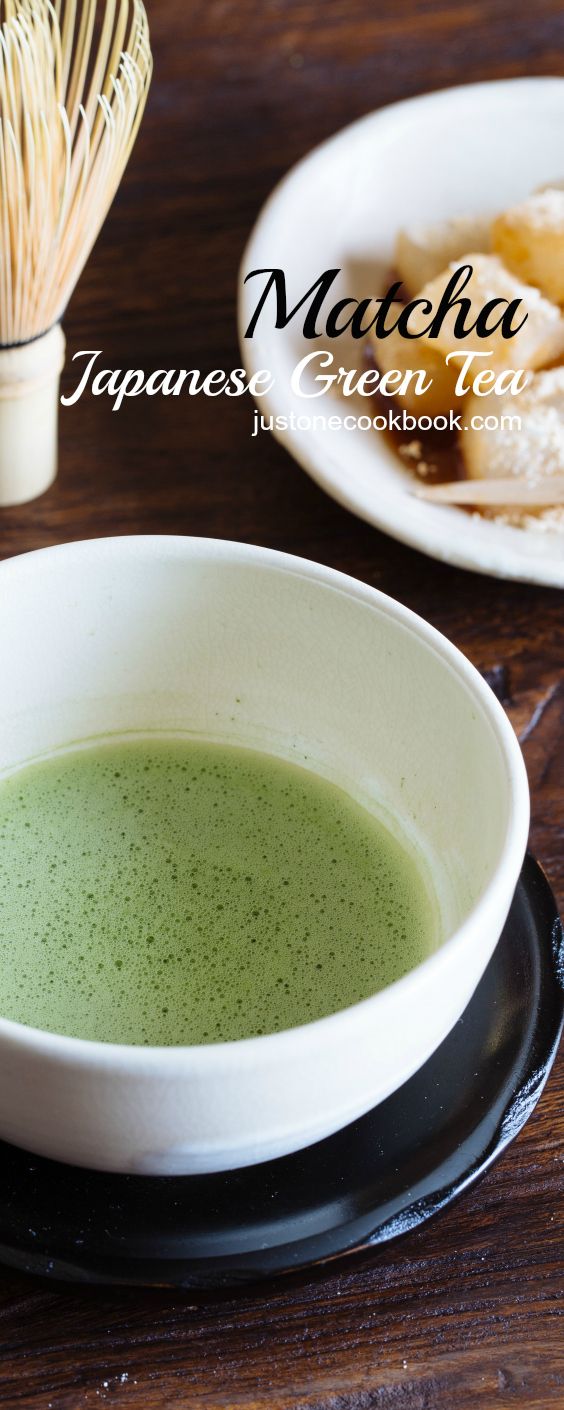Japanese Matcha Green Tea Latte (Hot Or Iced) Recipe, How To Make Matcha (Japanese Green Tea ) 抹茶の点て方
This post may contain affiliate links. Please read mydisclosure policy for details. As an Amazon Associate, I earn from qualifying purchases.
Đang xem: Matcha green tea latte (hot or iced) recipe

High in antioxidants, Matcha green tea offersmany great health benefits and calming effects. Drinking this beloved Japanese tea could be your new morning routine. Learn how to make a perfect cup of matcha (Japanese Green Tea) at home!

As I was writing this post, I realized that my love for matcha started around the young age of eight.
I remember my grandma tookme tothe Japanese teaceremony –Ochakai (お茶会). I got to dress up and pretended to be a grown-up “lady”. Even though I was too young to comprehend the full meaning of the rituals, I was captivated by the gracefulness of the host and the elaborate presentation. The first taste of matcha hit me as strong and bitter initially, but as the richness lingered in my mouth I began to appreciate its unique earthiness, andI’ve loved matchaever since.
Today I enjoy making matcha at home as a way to relax and for its many health benefits. To share with you this wonderful restorative Japanese tea, I’ve put together an informative guide and a video on how to make a perfect cup of matcha at home.
Watch How To Make Matcha (Japanese Green Tea)
Relax and enjoy with authentic matcha at home. Green tea is full of antioxidants, and the unique earthy matcha flavor is irresistible.
All About Matcha
What is Matcha?
Matcha (pronounce: “ma(t)-CHA” 抹茶) is finely milled green tea powder.
What’s the difference between matcha and regular loose-leaf green tea?
The tea plantations that are designated for matchaarecompletely shaded for about20days before harvesting so that the tea grows without direct exposure to sunlight. This causes both the amino acid theanine and the alkaloid caffeine in the tea leaves to increaseand yields a sweet flavor and distinct aroma.
How is Matcha Made?
Shading: Early to mid-April, tea leaves designated for matcha are completely shaded. Harvesting: Around early May the tea leaves are carefully picked. Steaming: As soon as the leaves are picked, they go through the steaming process to prevent them from being oxidized and retain natural green color, fragrance, and nutrition. The main difference between Japanese green tea and other teas (Chinese green tea, black tea, etc) is that Japanese tea leaves are steamed. Cooling/Drying: Theleaves are passed through thevarious stages of an air machine tocool and dry. Grinding: The tea leaves are ground into a fine powder. Traditionally, it’s manually ground on a stone mill, but these days it’s done with machines.
Why is Matcha Good for Your Health?
It is an antioxidant powerhouse. Antioxidants are the magical nutrients and enzymes responsible for giving us younger-looking skin, boosting memory and concentration, increasing energy level, burning fat, and preventing a number of life-threatening diseases like cancer.
Does Matcha Contain Caffeine?
Matcha powder has as much caffeine as coffee, but it is absorbed by the body at a slower rate. That means matcha has less of the caffeine side effects. If you are looking for a drink that can give you longer-lasting energy, matcha is a great option for those who want to quit coffee.
How Long Does Matcha Last? How Should I Store It?
The shelf-life of an unopened package depends on how it is packaged. In general, high quality (unopened) green tea powder lasts for 6 months. It’s best to use up within 2-3 weeks of opening the package. To store, seal the package tightly and store inside an airtight can. Avoid storing in direct sunlight and areas with high temperature or humidity. You can do this easily by drinking more matcha green tea or making delicious desserts!

3 Things You Need To Make Matcha
Since matcha is in the form of a finely ground powder, the way we make it is very different from the way to prepare loose-leaf green teas. In Japan, special tea utensils are typically used to prepare matcha. Below are the main tea utensils (and alternative suggestions) you will need to make matcha:
1. Chawan (Tea Bowl) 茶碗

Chawans are available in a wide range of sizes and styles, and different styles are used for thick and thin tea. Shallow bowls, which allow the tea to cool quickly are used in summer; deep bowls are used in winter to keep the teahot for alonger time.
Where To Buy: You can buy the chawans on Amazon or check if the nearby Japanese ceramic store carries any. Alternatively, you can use a similar size bowl (diameter should be at least 4 3/4 inch or 12 cm).
Cleaning & Storage: Rinse the chawan well and store it in open-air to dry. After the surface has dried, allow additional time for the bowl to dry completely as ceramic tends to retain moisture internally.
2. Chasen (Tea Whisk) 茶筌

This bamboo whisk is called chasenand the one in the above image has 80 tines. It’s great for whisking matcha thoroughly to create nice rich foam.
Where To Buy: You can purchase on Amazon. If you have an electric frother, you can use it instead.
Cleaning & Storage:Rinse the chasen well without using detergent and dry and storeupright (tines up) in the open air.
3. Chashaku 茶杓

A chashaku (‘tea scoop’) is a traditional Japanese tea utensil for measuring out a serving of powdered matcha. My chashaku is carved from bamboo, but some are made from rare woods or ivory.
Xem thêm: Top 10 Thương Hiệu Trà Sữa Cứ Kinh Doanh Nhượng Quyền Trà Sữa Chago
For one tea bowl, you will need 1 ½ heaping scoops of green tea powder (= about 2 g) and 2 to 2.4 oz (60-70 ml) of hot water.
Where To Buy: You can purchase chashakuhere. You can alternatively use a regular teaspoon. 1 teaspoon of the powdered match is 2 grams, and that’s what you’ll need for making one tea bowl.
Cleaning & Storage: Gently wipe the chashaku with a soft dry cloth or tissue. Do not use water.
4. Optional Items

Extra Tea Bowl: If you’re using boiling water instead of measuring the exact temperature of hot water (185F/85C), prepare an extra tea bowl. You will need to pour the boiling water into the extra tea bowl first so it’ll cool down before whisking.
Cloth: Use cloth such as100% cotton to dry your tea bowl.
Fine Sieve: A fine sieve helps to remove powdered lumps. If you don’t own one, make sure to spend extra time at step 8 (in the recipe) to blend well with green tea powder and hot water before pouring more hot water into the tea bowl.

2 Types of Matcha Green Tea
Depending on the preparation method, there are two types of matcha: the thinnerUsucha (薄茶) and the thickerKoicha (濃茶).
Koicha is the green tea of choice in Japanese tea ceremonies and special tea parties. It is much sweeter and more full-bodied than Usucha.
For a beginner and everyday use, I recommend making Usucha.
Enjoy Matcha At Home Without Going To Japanese Tea Ceremony
The Japanese tea ceremony (or we call Sado(茶道), Chado (茶道) or Chanoyu (茶の湯) or Ocha (お茶) in Japanese) is a choreographic ritual of preparing and serving matcha. The whole process is not about drinking tea; it’s all about aesthetics and considerations the host of the ceremony has for the guests with every movement and gesture.
As a guest, there are a lot of etiquettes and rules to follow when you attend the ceremony. For example, when matcha is served by a host, you hold the tea bowl with your right hand on its side and left hand under the cup. Then you will need to rotate the bowl a little to the right before drinking.
Why do we “turn” the bowl? When the host places thetea bowl in front of you, you are looking at the most beautiful part of the bowl. It is rude if you put your mouth directly on it, therefore you turn the bowl to the side and drink.
You can always experience the Japanese tea ceremony at tea houses in, but I also wanted to show you how easily you can prepare delicious matcha at home and enjoy it without attending the Japanese tea ceremony.
A simple ritual of making matcha is always a welcome relaxation at any time of the day. For me, the act of whisking and partaking the emerald green cup of tea reminds me to take a slower pace of life and appreciate the beauty of simplicity. I hope it will bring you the same calming experience as well.
Xem thêm: 10 Món Ngon Đặc Sản Sài Gòn Có Đặc Sản Gì

Sign up for thefreeJust One Cookbook newsletterdelivered to your inbox! And stay in touch with me onFacebook,Pinterest,YouTube, andInstagramfor all the latest updates.






Bình luận